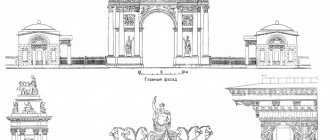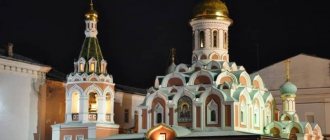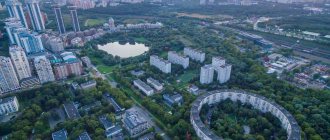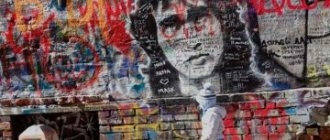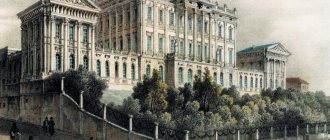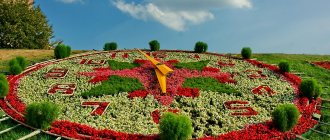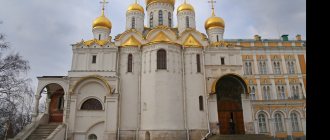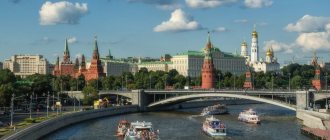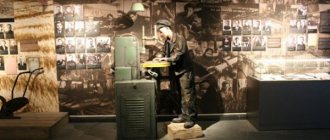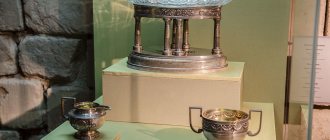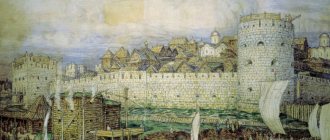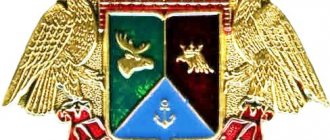When telling your interlocutors about visiting a cemetery as a tourist attraction, you often see surprise and wariness in their eyes. How, instead of magnificent estates, museums and art galleries, did you wander among the graves and admire the beauty, decoration, and admire the sculptural compositions?!
Indeed, this does not look like a standard monument of architecture and art, but how much you can see and learn when you find yourself in famous cemeteries! Almost every big city has its own famous burial sites, where tourists flock and where excursions are held. And there are plenty of people willing!
Novodevichy Cemetery
We invite you to take a walk through two of the most famous and significant cemeteries in Moscow - Novodevichy and Vagankovsky. On their territories rest the great minds of our fatherland, heroes of the Second World War, statesmen, writers, poets, composers, actors, directors, singers, athletes - all these people left an eternal mark on Russian and world history. Our famous sculptors, artists and architects worked on a large number of monuments: M. Anikushin, E. Vuchetich, S. Konenkov, V. Mukhina, N. Tomsky, G. Schultz, many of them also found their last resting places in these cemeteries. Some tombstones contain amazing stories, secrets and assumptions that have remained unsolved (we recommend reading the versions about the reburial of N.V. Gogol, and also finding out where the stone on the grave of M.A. Bulgakov was taken from. - Ed.).
Cemetery Vagankovsky
Despite the cold and rainy summer, we managed to take advantage of several sunny days and capture our walk in photographs. Although it is worth noting that a cloudy and gloomy sky adds mystery and mysticism, which, of course, changes the overall mood and impression of the place. It all depends on the visitor, on what emotions you want to receive in a certain period of life. There is a lot to think about here, and the silence and the feeling as if time has stopped around helps to clarify your thoughts and distract you from everyday worries.
Novodevichy Cemetery
Novodevichy Cemetery is the most famous and famous among the cemeteries of the Russian capital. It is considered the most prestigious, because a large number of world-famous people are buried there.
The maintenance of the cemetery is carried out with funds from the budget of the Russian Federation. A large staff of employees monitors the cleanliness and condition of graves and memorial complexes. A large number of famous personalities found their final rest at the Novodevichy cemetery.
Politicians such as Nikita Sergeevich Khrushchev, Raisa Gorbachev, great writers and poets are buried here: Mikhail Bulgakov, Agnia Barto, Vladimir Mayakovsky, Nikolai Gogol. The bodies of talented actors and directors are also stored here: Rolan Bykov, Alexander Dovzhenko, Anatoly Papanov, the great presenter, whose voice was known throughout the Soviet Union - Yuri Levitan, as well as the incomparable Lyudmila Zykina. This is just a small list of celebrities buried at the Novodevichy cemetery; many more names of representatives of cinema and sports, politics, music, and art are kept in this elite burial place.
Kuzminskoye
The Kuzminskoye cemetery in Moscow was created in 1956. It got its name from the name of the village of Kuzminki. The area is about 60 hectares. Initially, the territory was located on the site of the Kuzminsky forest park; some monuments can even now be found.
But after 1960, the cemetery was removed from the park, and the burials were moved to a new part. It is also worth noting that military personnel and military heroes are buried here, as well as many composers, actors and even scientists.
Prices for services start from 698 thousand rubles.
Troekurovskoye Cemetery
A modern continuation of the Novodevichy Cemetery. People who had services to the state in our time were buried at the Troyekurovskoye cemetery. It is worth noting the correct structure of the cemetery, where the graves are located according to a clear system. This organization of burial sites eliminates the possibility of getting lost. Celebrities such as Lyubov Polishchuk, Semyon Farada, Alexander Barykin, Natalya Gundareva, Walter Zapashny, Alexander Dedyushko and many other talented individuals are buried here.
Kalitnikovskoe
The Kalitnikovskoe cemetery in Moscow was founded back in 1771. Initially, burials took place only outside the city, since after the plague epidemic they were prohibited. The cemetery area is only 19 hectares. It is believed that until 1917, only merchants and representatives of the Russian intelligentsia were buried here. According to supposed data, the name of the cemetery comes from the Kalitniki area.
Interesting fact: according to legend, Ivan Kalita himself granted this land for the Krutitsky farmstead.
Currently, prices for funeral services at the Kalitnikovsky cemetery start from 5 thousand to 200.
Kuntsevo Cemetery
The Kuntsevskoe cemetery is also a burial place of great people: politicians of the Russian and Soviet periods, actors, athletes, cultural figures. The Kuntsevo cemetery is divided into two parts: new and old.
The territory located on the left side is considered an elite burial place; Evgeny Gaidai, Nonna Mordyukova, Evgeny Morgunov, Evgeny Belousov, the clown Karandash, Boris Khmelnitsky are buried here. The Kuntsevksoe cemetery is one of the cemeteries that are currently open for burial.
Ostankinskoye
Ostankino cemetery is located in the north of Moscow. It was founded in 1888. This name comes from the name of the village of Ostankino, which was founded in 1558. The cemetery area is 2.2 hectares.
The Ostankino cemetery is equipped with everything necessary for burials. It is worth noting that you can even rent equipment here.
Currently, prices at the Ostankino cemetery vary depending on the burial. For burial with a coffin, prices start from 257 thousand, for an urn - 113 thousand.
Cemetery Vagankovsky
Vagankovskoye Cemetery is one of the oldest cemeteries in Moscow and the Moscow region. This is the burial place for the best representatives of the USSR and Russia. The people who rest at the Vagankovskoye cemetery left an indelible mark on the history of their country; their talent and professionalism during their lifetime were undeniable. These people to this day remain the best representatives in their field, their merits are priceless. Sergei Yesenin, Vladimir Vysotsky, Igor Talkov, Maria Mironova, Alexander Abdulov, Georgy Vitsin and many others, whose names are also known and loved, are buried at the Vagankovskoye cemetery.
Moskvich
A little less than six months ago, a metro station of the same name was opened in Lefortovo, about which local residents are already joking: “Vvedenskoye Cemetery metro station, the train is not going any further, please vacate the carriages!” That’s what I do, especially since the station is really the final one, and the Vvedenskoye cemetery, where I’m heading, is really right opposite the Lefortovo metro station.
Having climbed up, I understand that the legendary steps of Patrick Gordon, an associate of Peter I, as well as the music of Franz Lefort, another favorite of the emperor, to which the dead on Vvedensky must perform either a gavotte or a minuet (here the variants of cemetery legends diverge), I I definitely won’t hear it today: construction is noisy all around. On Nalychnaya Street, 16-story buildings are being built overlooking the cemetery, and there are already swings overlooking the churchyard - they were installed as part of a program to improve the area near the metro, not forgetting, of course, about the tiles. But I’m not discouraged - for some reason, there are enough legends, ghosts and unsolved secrets on Vvedensky even without Lefort’s flute.
The cemetery on the Vvedensky Hills arose in 1771 during the plague epidemic: due to the threat of infection, it was decided to bury Moscow’s dead not in church graveyards, but outside the city limits. For this purpose, several cemeteries were created behind the Kamer-Kollezhsky Val, and in the one located next to the German Settlement, non-Orthodox Christians found rest, which is why it received the name of the Infidel, or German. At the end of the 19th century, Orthodox Christians with foreign roots were already buried here, and the revolution finally abolished religious, national and class prejudices: the cemetery was renamed Vvedenskoye, and now German merchants, French doctors, Italian sculptors, Russian generals, old Bolsheviks and Soviet scientists, artists and athletes.
But the main feature of Vvedensky remains the amazing preservation of its ancient monuments: in no other Moscow cemetery will you find so many chapels, crypts, marble and bronze angels, fragments of columns, mourners and tombstones of various shapes with inscriptions in a language that is not always understandable. This gothic or pseudo-gothic style attracts lovers of romantic and historical walks here: there are unusually many young people on Vvedensky, who are no less curious than mourners, and on weekends there are at least three excursions a day. At the same time, Vvedensky manages not to turn into a tourist attraction and maintains a chamber, almost family atmosphere. Here, neither the dull Soviet officialdom, nor the post-Soviet bandit revelry almost hurts the eye, and even the burial of members of the Orekhovskaya organized crime group, nestled next to the Lutheran Church of the Holy Trinity, tries to match: it is decorated not with full-length portraits of fighters against the backdrop of Mercedes, but with the crucifixion of Christ engraved on stone and robbers, illuminated by the apocalyptic rays of a giant sun.
Vvedensky also has its own dogs and cats. A flower seller introduces me to one of them. In fact, since the grannies near the cemetery fences were replaced by stern matrons in branded vests of the State Budgetary Institution “Ritual”, I am afraid to approach the flower girls. But it’s not like that at Vvedensky.
- Do you know what her name is? — a girl who sells flowers at the South Gate of the cemetery tells me, pointing to a cat running past. - Domino! You see, one paw is white, the other is dark. Well, shouldn’t her name be Chess? So she's Domino!
To the right of the main alley, not far from the South entrance, there is a majestic monument on the grave of the famous Moscow Art Theater actress Alla Tarasova. One of her most famous successes was the role of Masha in the classic production of “Three Sisters” in 1940, the one with the birches, which was recently revived at the Doronin Moscow Art Theater and was written on the poster: “Produced by Vladimir Nemirovich-Danchenko.” Tarasova’s partners in that performance, Mikhail Bolduman (Vershinin) and Viktor Stanitsyn (Andrei Prozorov), are also buried on Vvedensky.
I move on and turn left into the third section. On a small inconspicuous slab a few steps from the main alley there is an inscription: “Loder H. I. 1753–1832. An outstanding Russian physician. Professor at Moscow University." The tombstone - a typical Soviet red granite - was clearly placed in place of the lost old one, and here lies the famous doctor Christian Ivanovich Loder, who not only taught anatomy at the university, but was also the first to introduce the fashion for treatment with mineral waters in Moscow in the 1820s. After the procedures, he prescribed three hours of exercise for the patients: this is how, according to the writer Mikhail Pylyaev, the expression “walking as a quitter” arose.
A little further, I again turn left from the alley and go down the slope of the ravine to what used to be the bank of the Sinichka River, long ago enclosed in an underground sewer. In this quietest and most secluded part of the cemetery, two brilliant actors are buried: Mikhail Kozakov and Anatoly Ktorov - the same Paratov from “The Dowry” of 1936, who threw his luxurious fur coat into a puddle in front of Larisa.
But the most famous grave in the ravine is the family burial of the pharmacists Ferrein with a monument by Shekhtel: a slender bronze girl emerging from a dark doorway bordered with white stone drops a flower on the grave of the pharmacist’s deceased wife.
I start getting out of the ravine at the level of the ninth section and climb to a granite stele decorated with the image of the Order of the Legion of Honor. It says “Militaires Francais morts en 1812,” that is, “To the French soldiers who died in 1812.” They say that the land around the stele, fenced with a chain attached to cannons dug into the ground, is the territory of France, so a visit to Vvedenskoye in the era of closed borders is also a chance to be in Europe. Leaning against the fence is a wreath with a tricolor made of artificial flowers, which I at first took to be French, but when I noticed the St. George ribbons and a star made of gold foil on it, I realized that the tricolor was ours. Moreover, the ribbons attached to the wreath read “To the Sons of France” and “We Remember.” Your deeds are wonderful, Lord, I thought, even though it was a long time ago, they still burned our mother Moscow! Here, it seems, “We will not forget - we will not forgive!” would be more suitable.
Truly, I think, the Russian people are an example of Christian charity. Although it is more likely that those who laid the wreath mistook the stele for a monument to French pilots from the Normandie-Niemen aviation regiment, whose graves are located nearby. Almost all of them are cenotaphs (in the 1950s, relatives decided to rebury the pilots in their homeland), but there is also one real grave: First Lieutenant Bruno de Faltan and mechanic Sergei Astakhov died in the same plane, and Bruno’s relatives decided to leave them lying next to each other. In general, on Vvedensky there are several war memorials: a monument to the memory of Russian soldiers who died in 1812 (their ashes were discovered not so long ago during construction work on the site of the demolished Dorogomilovsky cemetery), several mass graves from the times of the Great Patriotic War and even the burial of German soldiers who died in captivity a soldier of the First World War - and there is some correct reconciling meaning in this proximity.
Having got back to the main alley, I turn left, towards the Northern Gate of the cemetery, and approach the grave of “Holy Doctor” Fyodor Petrovich Gaaz. The tombstone in the form of a cross on a boulder, symbolizing Golgotha, is enclosed in a rectangular fence. Lightweight Haaz shackles hang on it: being the chief prison doctor of Moscow, Fyodor Petrovich introduced, instead of the old pood-sized shackles, a lightweight model covered in leather, which he also tested on himself. In 1853, about 20 thousand Muscovites came to bury this righteous man, who spent all his considerable fortune, acquired by successful medical practice, to help the poor and prisoners.
Nearby, on the corner of the 11th section, stands perhaps the most famous Vvedensky chapel - the tomb of the Erlanger family. There are at least three amazing stories associated with it. Firstly, three geniuses took part in the creation of this snow-white mausoleum for the “flour king” Anton Erlanger - with columns, a turquoise roof and golden angels on the pediment: it was built according to Shekhtel’s design, and inside (alas, you can’t get there now ) there is a mosaic panel “Christ the Sower”, created by master Vladimir Frolov (his works can be seen, for example, at the Avto and Novokuznetskaya metro stations) based on a sketch by Petrov-Vodkin. The second story happened with the chapel, which was then in disrepair, in the early 1990s. Money for restoration was found not thanks to the department of culture, relatives of the deceased or the cemetery administration - it was collected by a simple 60-year-old woman Tamara Pavlovna Kronkoyans, whom many considered blessed or a holy fool, and on Vvedensky was called Mother Tamara. For twelve years she lived in the cemetery - either in a trailer, or in a hut behind the mausoleum, every day she begged for alms from the metro and collected the required amount. “Tamara was a hard worker,” Melania, the caretaker of the chapel of Elder Zosima on Vvedensky, told me. — I never sat idle. She lived in her hut both in summer and in winter - she heated it with a potbelly stove.” 20 years have passed, and the Erlanger Chapel still looks like the most well-kept in the cemetery.
True, two of the four walls are covered with pens, markers and felt-tip pens. And here begins the third story, connected with the Erlangers and our eternal expectation of a simple and quick miracle. For several decades now, people have been coming here to write their requests and cherished desires on the wall. If you put them together, you get a book that could be called “The Encyclopedia of Futility and Despair.” Prayers for health for themselves and loved ones are interspersed with requests for money, passing driving tests, real estate in Turkey and a Spanish visa. At the moment, the owner of the pink marker, Angelica, is in the lead. She wants to become a TV presenter on a federal channel and has repeated her request at least five times already. Those who are thirsty turn not only to God, but also directly to the Erlangers, who are called here the “Holy Family”: “Help my daughter get on the budget, please”, “Holy Family, I ask for help to quickly and profitably sell an apartment in Omsk”, “The Erlanger Family, help me get pregnant successfully in July 2021!”, “Is it possible to make my husband Alexander stop drinking and my son to get a good job? Thank you in advance,” “Holy Family, free me, Natalya, from persecution from the city of Sovetsky, Khanty-Mansi Autonomous Okrug. Give me freedom." The most surprising thing is that there seem to be no Erlangers in the crypt. Anton, who died in 1910, was either unwilling or did not have time to be moved to the mausoleum built in 1914, and the ashes of his son Alexander, who was buried there, were taken abroad in the 1950s. So the tomb is empty, but wishes still come true. I still don't understand how this works.
On the path between the 11th and 13th sections there are several interesting tombstones. Directly opposite the Erlangers is the grave of jeweler Robert Fulda, the man who created the first football team in Moscow at the beginning of the 20th century: a stunningly beautiful marble mourner sat down on the steps near the door to another world.
Nearby there is another door and another girl, but this time she is not mourning, but is either thoughtful, or flirtatiously inviting her to enter (she used to have a bronze flower in her hand, but it was broken off, and now a live rose is often put in its place or cloves). This is the grave of French businessmen Leon and Sophie Plo. The husband traded metals, the wife ran a glove shop on Myasnitskaya. One of Vvedensky’s most bloodthirsty legends is connected with them: supposedly the husband, having learned that Sophie was cheating on him, ordered this monument, and then killed her and himself. The appearance of this story is most likely due to the fact that the spouses’ tombstones indicate the same year of death, 1905.
And at the very end of the 11th section there is a gravestone with an inscription in German: it mentions the names of Gordon and Lefort, two of the most legendary inhabitants of Vvedensky. Legendary because both associates of Peter I died in 1699, that is, almost a hundred years before the appearance of the German Cemetery, and there is no reliable evidence that they were later reburied here. But not even a couple of years pass without a message appearing that the remains of, for example, Lefort on Vvedensky have been discovered, although the cemetery administration regularly denies them. Until recently, it was believed that Lefort was not here after all, but Gordon was and was lying in this very place. But recently, historian Dmitry Guzevich doubted this: the inscription on the stone mentions Colonel Gordon, while Patrick had already been a general for 12 years by the time of his death. So there is a possibility that his youngest son Theodor, who rose to the rank of colonel, was reburied in Nemetsky.
I return to the main alley and almost at the very Northern gate of the cemetery I turn right to look at the chapel at the grave of Elder Zechariah, also built with funds raised by Tamara Kronkoyans. The caretaker of the chapel, Melania, complains to me about the Satanists, who, according to her, still raid the cemetery at night: “They cut themselves, get drunk and run naked through the graves, breaking crosses. How can the security guards keep track of everyone?”
From her I learn that Mother Tamara died last year and was buried nearby, on the 14th plot. But in the early 2000s, Tamara Pavlovna was literally kicked out of the cemetery by the police and her hut was broken. So there is still the highest justice in the fact that this ascetic, who did so much for Vvedensky, rested here.
I go to the neighboring 29th plot to see the burial place of the great architect Konstantin Melnikov. To my surprise, it turns out to be quite neglected: the graves of the architect and his wife are overgrown with weeds, and between two laconic white crosses on a rusty rod there is a faded portrait of their son, the artist Viktor Melnikov, who died in 2006.
Along the Spruce Alley, which runs parallel to the main one, I begin to move back towards the South Gate. Along the way, two monuments attract my attention: the first is almost the tallest column in the entire cemetery. It was installed on the Morozov family plot, where, in particular, Mikhail Mikhailovich, the famous Soviet Shakespeare scholar, is buried, aka Mika Morozov from the famous portrait by Valentin Serov.
The second monument is also impossible to miss - it is an impressively sized mournful angel on the grave of the tragedian actors the Adelheim brothers, who at the end of the 19th century and the beginning of the 20th century showed Russia not only Shakespeare, but also Schiller. Nowadays, the Adelheim grave is a favorite place for selfies among young people, especially those of Gothic appearance. In general, a lot is said about the Goth orgies at the German Cemetery in the mid-2000s, but as for written evidence, I was able to find only one: “At the Vvedenskoye Cemetery in Moscow late in the evening of October 31, 2007, security officers detained seven representatives of the informal “Goth” movement. Young people entered the cemetery and tried to hold a “Satan’s ball” there, the agency’s interlocutor said. They did not have documents with them and tried to pay off by offering 3,500 rubles. They were detained and transferred to the Lefortovo police station.” One way or another, today's boys and girls in black with hair of all the colors of the rainbow decorously stand in line to have their photo taken with the next angel of sorrow, and generally behave quietly, at least during the day.
At the round square with an obelisk in memory of the Russian soldiers who died in 1812, I turn left, towards the 20th precinct. Here stands the famous White Christ - this is how the monument on the grave of the Rekkov-Tretyakovs is called on Vvedensky. Yakov Rekk was a major Moscow developer who worked with the best architects of the early 20th century, in particular with Lev Kekushev. When Rekk died in 1913, a statue of Christ was ordered for his grave in Italy, but the First World War began, then the revolution, and the sculpture never reached Russia. In 1919, Rekkov’s son-in-law Pyotr Tretyakov promised his mother-in-law before her death that he would eventually erect the statue. Almost another 30 years passed before he kept his word: in 1946, a white marble mournful Christ by the sculptor Nadezhda Krandievskaya appeared in front of the majestic black wall of the tombstone. And it is famous for its miraculous healing power, which will be discussed later.
Directly opposite Rekkov, on the 18th section, there is a real masterpiece: a monument on the grave of the wonderful writer Mikhail Prishvin. She is in the third row from the path, but when you come closer, you understand that the sculptor Sergei Konenkov was not called the Russian Rodin for nothing: the bird of paradise Sirin, perched on the edge of a snow-white boulder, seems to be about to soar into the sky. The famous Moscow expert Andrei Lednev calls this monument “a message across the threshold of death”: in the lower part of the boulder, above the dates of life, the writer’s surname is written in the dative case: “M. M. Prishvin,” and at the top right, if you look closely, you can find the sender’s signature: “S. Konenkov."
Past the artist Viktor Vasnetsov (his gravestone is decorated with a bas-relief of a knight at a crossroads), I hurry to the neighboring 21st site, about which I know that the idol of my student youth is buried there - philosopher, literary critic and, as they would now say, cultural critic Mikhail Bakhtin . The search takes about an hour - this happens when you only know the site number. If your heart also skips a beat at the words “chronotope”, “menippea” and “bottom”, then I will save you time: the grave of Bakhtin and his wife Elena Alexandrovna, decorated with a modest black cross, is located in the third row from the path between 23rd and 21st precinct, ninth on the left side, if you go from the side of precinct No. 18. At the end of the 1910s, the future brilliant pianist Maria Yudina was also a member of Bakhtin’s Nevel philosophical circle. Her grave, with a cross entwined with grapes inscribed in a white stone arch, is located about a hundred paces away - at the very end of the 18th section.
I get back out onto Spruce Alley and go to the South Exit. On the left, on the 19th plot, is the family burial place of the Rerbergs, the most famous of which are the architect Ivan Ivanovich, the author of the projects for the Kyiv Station and the Central Telegraph, and his great-nephew Georgy, the cameraman who shot “Mirror”. Now, however, local guides present him as “the prototype of Khrustalev from the TV series “The Thaw.” Even closer to the entrance on the left is the grave of the poetess Sofia Parnok. Very well maintained, with two vases of fresh flowers and two framed photographs. Under one of them is printed an epitaph similar to a spell: “She was a great Poet, she loved Great Russia, she loved great Women, she herself was a great Woman. Peace be with your ashes, Great Sophia..."
I turn right from Spruce Alley: here, in the depths of the 4th section, stands the famous “Vampire”, aka “House on the Sand” - a crypt that can safely be called a symbol of the current Vvedensky cemetery. The neoclassical mausoleum with a facade in the form of a ruined antique portico is recognized as a cultural heritage site, but neither the name of the architect nor the date of construction are known - most likely, the 1910s, but this is not certain. Moreover, it is not clear for whom it was erected. According to one version, the crypt belonged to the family of the “father of Russian calico” Ludwig Knop (he became part of the saying “where there is a church, there is a priest, and where there is a factory, there is Knop”), according to another, someone from the family of German industrialists Wogau was buried here . On the one hand, all the Knops who lived in Russia at the beginning of the 20th century, it seems, were able to emigrate and died abroad, and Vogau just has a deceased person who matches the dates. On the other hand, the Vogau family burial already existed at the other end of the cemetery, and it seemed that they could not afford to build a crypt in this place. And “Vampire” is the main setting of the stories that are told on Vvedensky about the Goths and Satanists. It was here that they performed, or, God forbid, conduct their most terrible rituals with sacrifices: one guide told me how “local grandmothers told him that once the entire ground around the crypt was smeared with goat’s blood.” And the crypt was nicknamed “Vampire” for a reason: once an unlucky Goth climbed inside the crypt, and there was a dead hand sticking out of the ground.
I come closer, but among the objects of the devil’s cult I find only an artificial flower, a “Cow” candy wrapper, a coin and a candle. Like many monuments on Vvedensky, the “House on the Sand” is dilapidated: the walls are cracked, the windows and doors are covered with metal sheets. But the question is: is it necessary to restore what was originally intended to be a ruin? Or was the plan of the unknown creator precisely such slow dying and destruction? It seems that specialists from the capital’s department of cultural heritage were puzzled by the same questions: the decision to reconstruct was made two years ago, but it never began.
A girl with dreadlocks stands next to the crypt and thoughtfully looks at the inscription on the wall between the columns: “Anyone, but not Yegor.” Next to it is another, more specific one: “We need a good client for a long time.” Such requests for help are reminiscent of another story associated with the “House on the Sand”: once on the steps in front of the portico there was a two-meter bronze statue of the Savior by the Italian sculptor Romanelli, which was nicknamed the Black Christ in the cemetery. It was believed that the water drained from his hand had miraculous and healing powers, so people came here with two buckets: from one they poured water on top of the statue’s hand, and in the other they collected water (this process is described in detail, in particular, in the life of St. Matrona of Moscow ). In 1946, as part of the fight against religious obscurantism, the Black Christ was removed from the cemetery, but then miraculously found again, and now it can be seen in the museum of the Moscow Theological Academy in the Trinity-Sergius Lavra. And the miraculous properties of the Black Christ, according to cemetery belief, were transferred to the White Christ, who appeared in the same 1946 at the grave of Rekkov. And this proves once again: you can remove Christ from the Vvedensky cemetery, but it is impossible to banish the dream of a miracle from the heads and hearts of Muscovites who come here.
Photo: Igor Stomakhin
Don Cemetery
Relatively new, here are modern burials, graves of famous people: directors, writers, musicians, scientists, artists. Faina Ranevskaya, Dmitry Shutov and many others found their final rest here.
Of course, this is only a small part of the cemeteries located in Moscow. These cemeteries have long become not only a burial place, but also a historical heritage; people come here to honor the memory of people who left an indelible mark on the history of the Russian state and the states of the post-Soviet republics, including Belarus.
Kurgans
Moscow, as you know, was founded in 1147. But even before that, an ancient tribe of Vyatichi Slavs lived on these lands. Such communities remained stubborn for a long time, not wanting to accept Christianity. For a long time, the Vyatichi buried their dead according to ancient pagan traditions. One of the most common types of Vyatichi burials were mounds.
Representatives of this pagan tribe first placed the deceased in a burial pit. Then the deceased was covered with earth in such a way that a small hill was formed above him. The Vyatichi sent the deceased on his final journey with gifts from loved ones and various household items.
Most of these ancient pagan mounds in the capital are located on the right bank of the Moscow River. The most significant burial of the Vyatichi is located on the Setun River.
Doctor Over (09/18/1804 – 12/23/1864), Vvedenskoye Cemetery
In the depths of the Vvedensky cemetery lies the crypt of the famous doctor Alexander Over in the 19th century. There is a sign that it helps those suffering from diseases. It is believed that for this it is enough to simply say: “Doctor Over” near his chapel, and he should help. Candles are still brought to the doctor’s grave.
At one time, the doctor headed the commission for the treatment of Nikolai Vasilyevich Gogol. The writer experienced terrible agony after the death of his close friend, Ekaterina Khomyakova.
“Unfortunately, Dr. Over was unable to insist on his opinion at the commission meetings,” says Natalya Leonova. – The majority of the commission members accepted the opinion of Dr. Klimenkov, who literally ruined Gogol by pouring cold water on him in a hot bath. And Over assumed that Gogol had an unusual mental state due to an internal illness of the stomach.”
Photo: portal Moscow 24/Ivan Nosatov
Northern Autonomous Okrug
| Cemetery name | Address |
| Businovskoe | Krasnopolyanskaya street, possession 18 |
| Golovinskoe | Golovinskoe highway, possession 13 |
| Khimkinskoe | Novoshodnenskoe highway, possession 1 |
| Cherkizovskoe (Northern) | Molzhaninovsky district, Projected passage No. 5363, Cherkizovskoe cemetery, no. 1 |
North-Eastern Autonomous District
| Cemetery name | Address |
| Alekseevskoe | Mira Avenue, property 132 |
| Altufevskoe | 85th km of MKAD |
| Babushkinskoe | Yaroslavskoe highway, possession 52 |
| Vinogradovo | Dmitrovskoe highway, possession 162 |
| Vladykinskoe | Station street, property 8a |
| Leonovskoe | 1st Leonov Street, property 8 |
| Medvedkovskoe | Zapovednaya street, property 7a |
| Ostankinskoye | Prudovoy proezd, possession 11 |
| Perlovskoye | 93rd km of MKAD, property 6A |
| Pyatnitskoye | Droboliteiny Lane, possession 3, buildings 5, 9 |
| Raevskoe | Olonetsky proezd, possession 2 |
| Staro-Markovskoe | Dmitrovskoe highway, property 124a |
Eastern Autonomous District
| Cemetery | Address |
| Bogorodskoye | Krasnobogatyrskaya street, property 81 |
| Veshnyakovskoe | Yunosti Street, building 17 |
| Golyanovskoe | Kurganskaya street, possession 11 |
| Ivanovskoe | Steelworkers Street, property 6, buildings 1-6 |
| Izmailovskoe | Izmailovsky Prospekt, property 30 |
| Perovskoe | Ketcherskaya street, property 20 |
| Preobrazhenskoe | Preobrazhensky Val, possession 17a |
| Cherkizovskoe | Bolshaya Cherkizovskaya street, property 17 |
South-Eastern Autonomous District
| Cemetery | Address |
| Vvedenskoye | Cash street, property 1 |
| Kapotninskoe | 1st Kapotninsky proezd |
| Kuzminskoye | Academician Scriabin Street, property 19 |
| Lyublinskoe | Stavropolskaya street, property 74a |
| Rogozhskoe | Staroobryadcheskaya street, property 31a |
Southern Autonomous District
| Cemetery | Address |
| Borisovskoe | Borisovskie Prudy street, property 4 |
| Danilovskoe | 4th Roshchinsky passage, property 30 |
| Danilovskoe (Muslim) | 2nd Roshchinsky passage, property 10 |
| Donskoe | Ordzhonikidze street, building 4 |
| Kotlyakovskoe | Business street, possession 21 |
| Orekhovskoe | Shipilovsky proezd, possession 20 |
| Pokrovskoye | Podolsky Kursantov Street, property 24 |
| Staro-Pokrovskoye | 1st Dorozhny Passage, property 10 |
South-Western Autonomous District
| Cemetery | Address |
| Butovskoe | South Butovo, 36th km of the Kursk railway |
| Zakharyinskoe | South Butovo, Zakharyino village, Nikolai Sirotkin street |
| Kachalovskoe | Severnoe Butovo, MKR-5, Starokachalovskaya street, possession 8a |
| Chernevskoe | Yuzhnoye Butovo, Yuzhnobutovskaya street |
| Yasenevskoe | Novoyasenevsky prospect, property 42 |
Western Autonomous District
| Cemetery | Address |
| Vostryakovskoye (Central and Northern) | Ozernaya street, property 47, buildings 3-8 |
| Vostryakovskoe (Jewish) | Borovskoe highway, projected passage No. 634 |
| Kuntsevskoe | Ryabinovaya street, property 20 |
| Orlovskoe | Staroorlovskaya street |
| Rublevskoe | Rublevo village |
| Troekurovskoe | Ryabinovaya street, property 24 |
North-Western Autonomous District
| Cemetery | Address |
| Rozhdestvenskoe | 1st Muravskaya street, property 39 |
| Trinity-Lykovskoe | Tvardovskogo Street, possession 12, building 3 |
Zelenograd Autonomous District
| Cemetery | Address |
| Alabushevskoe | City of Zelenograd, industrial zone "Alabushevo" |
| Zelenogradskoe (Central) | Zelenograd city, passage No. 4921, building 3, buildings 1, 2 |
| Zelenogradskoe (Northern) | Zelenograd city, passage No. 710, building 19, buildings 1, 3, 4 |
| Nikolskoye | Zelenograd city, Moskovsky prospect |
Troitsky Autonomous Okrug
| Cemetery | Location |
| Belousovo | Settlement Novofedorovskoye, Belousovo village |
| Bogorodskoye | Settlement Rogovskoye, village Bogorodskoye |
| Epiphany | Voronovskoye settlement, Epiphany village |
| Bylovo | Krasnopakhorskoe settlement, Bylovo village |
| Bylovo-1 | Krasnopakhorskoe settlement, Bylovo village |
| Varvarino | Krasnopakhorskoe settlement, Varvarino village |
| Vasyunino | Settlement Rogovskoye, village Vasyunino |
| Voronovo | Settlement Voronovskoye, village Voronovo |
| Vorsino | Settlement Voronovskoye, village Vorsino |
| Gubtsevo | Pervomaiskoe settlement, Gubtsevo village |
| Zhokhovo | Settlement Klenovskoye, village Zhokhovo |
| Zosimova Pustyn | Settlement Novofedorovskoe, village Zosimova Pustyn |
| Isakovo | Mikhailovo-Yartsevskoe settlement, Isakovo village |
| Klenovo | Settlement Klenovskoye, village Klenovo |
| Klokovo | Pervomaiskoe settlement, Klokovo village |
| Red | Settlement Krasnopakhorskoe, village Krasnoe |
| Kuznetsovo | Settlement Novofedorovskoe, village Kuznetsovo |
| Lukoshkino | Settlement Klenovskoye, village Lukoshkino |
| Mavrino | Settlement Klenovskoye, village Mavrino |
| Nikolskoye | Settlement Voronovskoye, village Nikolskoye |
| Novogromovo | Voronovskoye settlement, Novogromovo village |
| Oznobishino | Shchapovskoye settlement, Oznobishino village |
| Pessier | Shchapovskoye settlement, Pesye village |
| Popovka | Pervomaiskoe settlement, Popovka village |
| Puchkovo | Pervomaiskoe settlement, Puchkovo village |
| Raevo | Krasnopakhorskoe settlement, Raevo village |
| Christmas | Settlement Rogovskoye, village Rozhdestvenno |
| Romantsevo | Krasnopakhorskoe settlement, Romantsevo village |
| Rudnevo | Settlement Novofedorovskoe, village Rudnevo |
| Salkovo | Settlement Klenovskoye, village Salkovo |
| Satino-Russkoe | Shchapovskoye settlement, Satino-Russkoye village |
| Svitino | Settlement Voronovskoye, village Svitino |
| Spas-Kuplya | Settlement Rogovskoye, village Spas-Kuplya |
| Tovarishevo-1 | Settlement Klenovskoye, village Tovarishchevo |
| Trinity city | Krasnopakhorskoe settlement, Podosinki village |
| Hatminki | Pervomaiskoe settlement, Khatminki village |
| Chirikovo | Krasnopakhorskoe settlement, Chirikovo village |
| Shchapovo | Shchapovo settlement, Shchapovo village |
| Yudanovka | Voronovskoye settlement, Yudanovka village |
Novomoskovsk Autonomous Okrug
| Cemetery | Location |
| Ankudinovo | Settlement Marushkinskoye, village Ankudinovo |
| Barysh | Shcherbinka city, Spring street |
| Bolshoye Pokrovskoye | Marushkinskoye settlement, Bolshoye Pokrovskoye village |
| Bolshoye Svinorye | Marushkinskoye settlement, Bolshoye Svinorye village |
| Vatutinskoe | Desenovskoe settlement, Vatutinki village |
| Devyatskoye | Ryazanovskoye settlement, Devyatskoye village |
| Ivanovskoe | Sosenskoye settlement, Yamontovo village |
| Izvarinskoe | Settlement Vnukovskoye, village Izvarino |
| Kuvekinskoe | Desyonovskoye settlement, Kuvekino village |
| Letovskoe | Settlement Sosenskoye, village Letovo |
| Nikolo-Khovanskoe | Settlement Sosenskoye |
| Ostafyevo | Settlement Ryazanovskoye, village Ostafyevo |
| Peredelkinskoe | Settlement Vnukovskoye, village DSK "Michurinets" |
| Peredeltsevskoye | Moskovsky settlement, Moskovsky city |
| Prokshinskoe | Settlement Sosenskoye, village Prokshino |
| Pykhtinskoe | Settlement Vnukovskoye, village Pykhtino |
| Rakitki | Settlement Desenovskoye, Desna village |
| Salaryevskoe | Settlement Moskovsky, village Salaryevo |
| Serednevskoe | Filimonkovskoe settlement, Serednevo village |
| Sosenskoye | Sosenskoye settlement, Sosenki village |
| Stanislavskoe | Desenovskoye settlement, Stanislavl village |
| Filimonkovskoe | Filimonkovskoe settlement, Filimonki settlement |
| Khovanskoe | Sosenskoye settlement, Mosrentgen settlement, 21st km of Kievskoe highway |
| Yakovlevskoe | Settlement Desenovskoye, village Yakovlevo |
Cemeteries located in the Moscow region
| Cemetery | Location |
| Dolgoprudnenskoe | Dolgoprudny city, Likhachevsky proezd |
| Domodedovo | Domodedovo city, Istomikha village |
| Lianozovskoe | Mytishchi district, 83rd km of MKAD |
| Mitinskoe | Krasnogorsk municipal district, rural settlement Otradnenskoye, 6th km of Pyatnitskoye highway |
| Nikolo-Arkhangelskoye | Balashikha urban district, Nikolsko-Arkhangelskoye village, Nosovikhinskoye highway, 16 |
| Perepechinskoye | Solnechnogorsk GO, rural settlement Lunevskoye, village of Perepechino |
| Shcherbinskoe | Podolsky GO, rural settlement Strelkovskoye, 29th km of the M-2 “Crimea” highway, Shcherbinsky passage |
| Yastrebkovskoe | Odintsovo GO, Yastrebki village |
